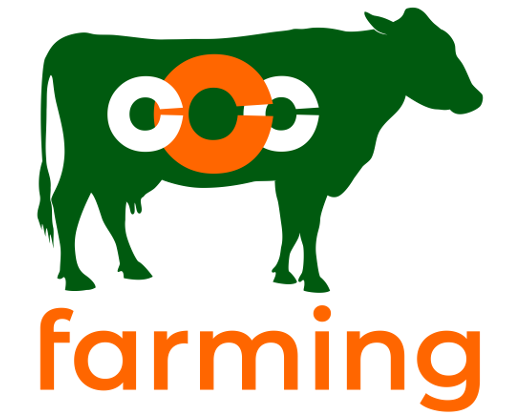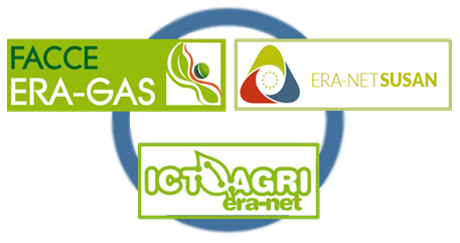Minutes of CCCfarming skype Teams meeting of 1 July 2021
Present: Bob Rees; Valentina Becciolini; Diāna Ruska; Kaspars Naglis-Liepa; Violeta Juškienė; Paul Hargreaves; Vergé Xavier; Niklas Sölzer; Paul Galama; Adam Cieślak; Malgorzata Szumacher; Nadege Edouard, Chris Flechard; Katja Klumpp, Caroline Evrat-Georgel, Abele Kuipers
Agenda:
- 1.Concept minutes of CCCfarming meeting of 29 April 2021; information provided about WP2 is presented in the Annex of these minutes. LLU asks to add to minutes that Latvia did complete the emission measurements in the 8 barns in March. This can be considered as the winter season in Latvia. With this remark included, minutes are approved.
- 2.Announcement
- - CCCfarming partners are invited to the EAAP FreeWalk seminar in Davos, late August 2021; it concerns 3 sessions about dairy cattle housing. Lena Fehmer will give a presentation about her CCCfarming work. Peter Groot-Koerkamp will present the project globally.
- - A webinar about “Vision on reducing emissions on dairy farm level” was held on Friday 16 April 2021. 70 participants joined. It is stated that it would be beneficial to exploit the lectures more intensively, because it was well presented and good material. How to do this?
- 3. WP1.1: Overview field study farms. Valentina tells that the overview is almost complete. All countries delivered data. A report will be prepared with all farms and pictures included.
- 4. WP1.5: 1st round emission measurements with simplified method
- Most countries have been in action.
- Latvia completed 1st round in March (considered in winter). Second round completed in the middle of May (considered in spring).
- Italy did 1st round in March (spring); 2nd round in Summer time
- Germany did 1st round in May
- Netherlands completed 1st round in March (considered as spring); 2nd round in August, during grazing period.
- Poland did 1st round in May/June; 2nd round in Autumn.
- Lithuania 1st round in May; 2nd round in August.
- IDELE, France is doing the job presently in June, and SRUC plans to do 1st round this summer.
Anne-Sophie Lissy tells about the received samples, and presents preliminary results of gas concentrations measured in the French lab. Very interesting preliminary data. Do we understand the data? Usually the concentrations inside are higher than outside, as expected. After checking, Anne-Sophie will send the lab data overview to the partners. Question was raised about time between measurement and lab analysis. In fact how shorter how better. But some months delay will still be oke when tube is properly closed.
As partner, you filled in the Farm Inquiry during the farm visit; you will have to enter these data in an Excel file, in which émission indicators are calculated automatically. The input and output of the Excel file was explained by Xavier Verge. Thus data from the Farm Inquiry and French lab are the input for the Emissions calculating Excel file.
Germany – Giessen analysed the farm gas concentrations in the own lab. There will be contact with JLU to oversee the consequences of processing these data in a similar way as the other partners.
-
5. WP1.4 - NPC balances
Most partners send data to Marion de Vries. Paul Galma will contact Marion to give insight in the completeness of the provided data. - 6. WP1.6 – Kitchen table talks
Vera Eory is not present. Abele presents a preliminary analysis of question 49. All countries, except France provided data. Attention is asked for the completeness of input from some countries. This info about Q49 and missing input will be sent to Vera. - 7. WP2 plans have been explained in the previous meeting; new actions can be mentioned.
Adam Cieslak explains in name of the Polish PULS team about WP2.2.1 : Study novel feeding practices related to animal. Various research options from the project description are mentioned. The PULS team has contact with Nadege Edouard about the plans. The Netherlands’ team emphasizes the slow release methane blocker as part of the study. A meeting will be organized by the Polish team with some selected partners to discuss the options more carefully. - Paul Galama presents shortly his experimental work at Dairy Campus. Pictures from the three innovative small barn floor types and cow-toilet are shown with different ways of separating urine from the faces. Sulfuric acid is now also used to lower the ammonia emissions.
- Bob Rees is working together on the grassland and biodiversity task (WP2.4.2) with France, Poland and Latvia.
- Chris Flechard tells that they have extended the flux measurements to a second farm in Southern Brittany. Paul Galama asks Nadege Edouard about housing experiment s. They plan to have contact.
- 8. WP3: Three tasks from project proposal:
- - Task 1: Farmers opinions concerning mitigation practices and techniques
- SRUC, LLU
- Marginal abatement curves will be generated for the most effective mitigation measures
- - Task 2: Policy and ethical attitudes to GHG mitigation
- IDELE, LLU, SRUC
- - Task 3: Socio-economic and trade-off aspects of mitigation practices and techniques
- SRUC, LLU, WR
- The effects on profitability of selected farm practices will be modelled in whole farm bio-economic models, e.g. Scotfarm and Dairy Wise.
We like to focus first on task 1. Because Vera Eory is not present, progress is difficult. After summer time a meeting will be organized between SRUC, LLU and WUR to fill in Task 1.
Abele Kuipers, 2 Juli 2021

